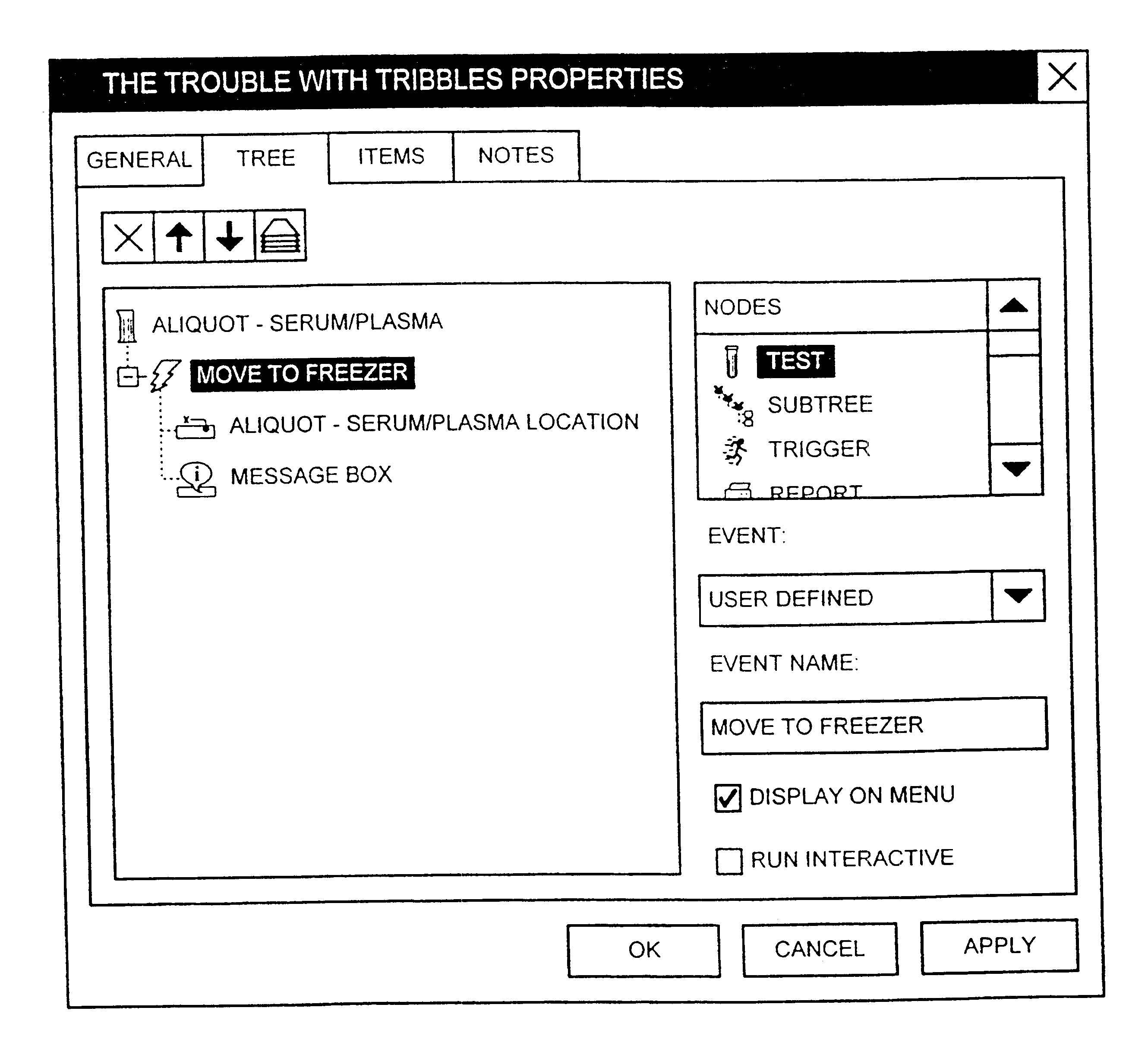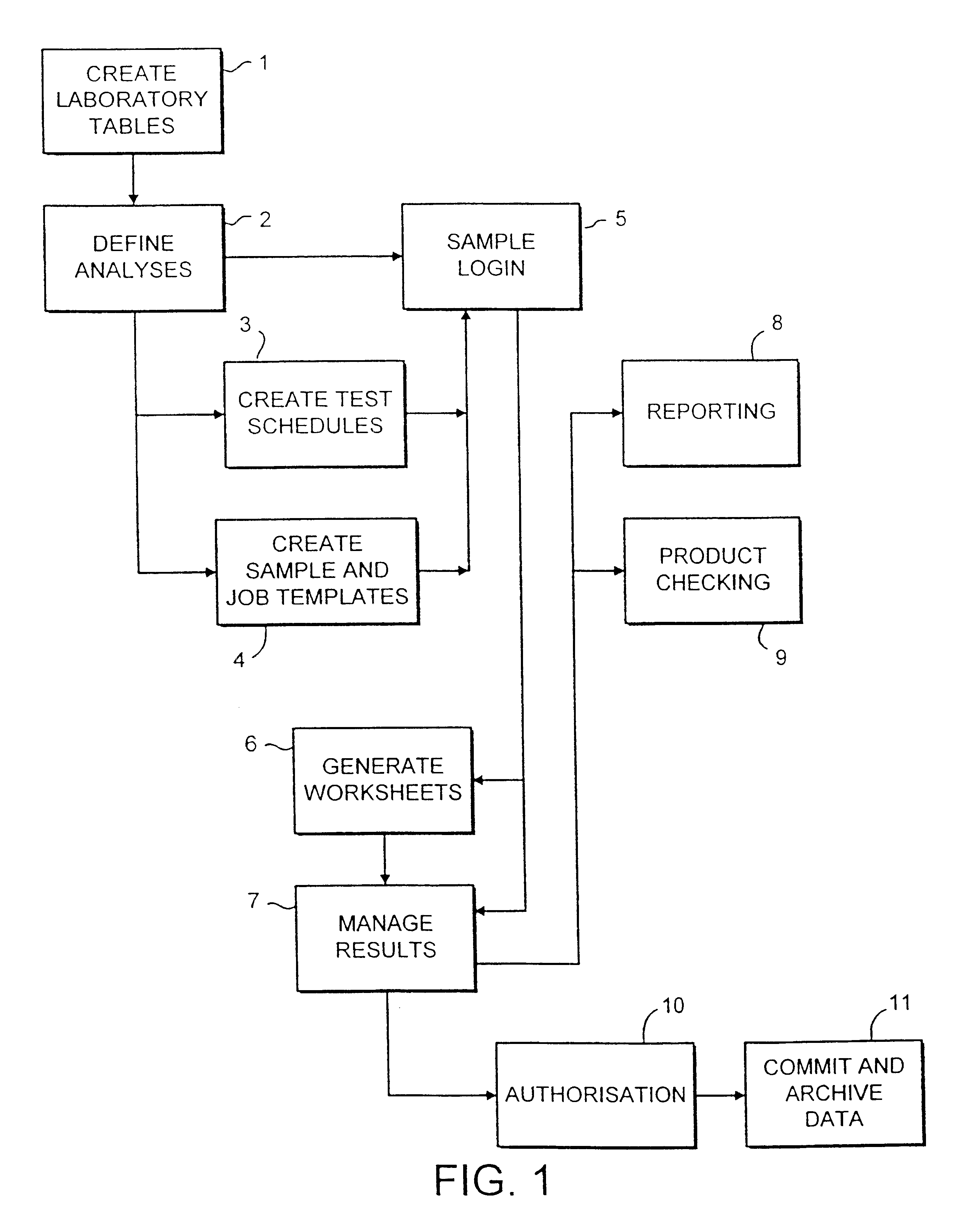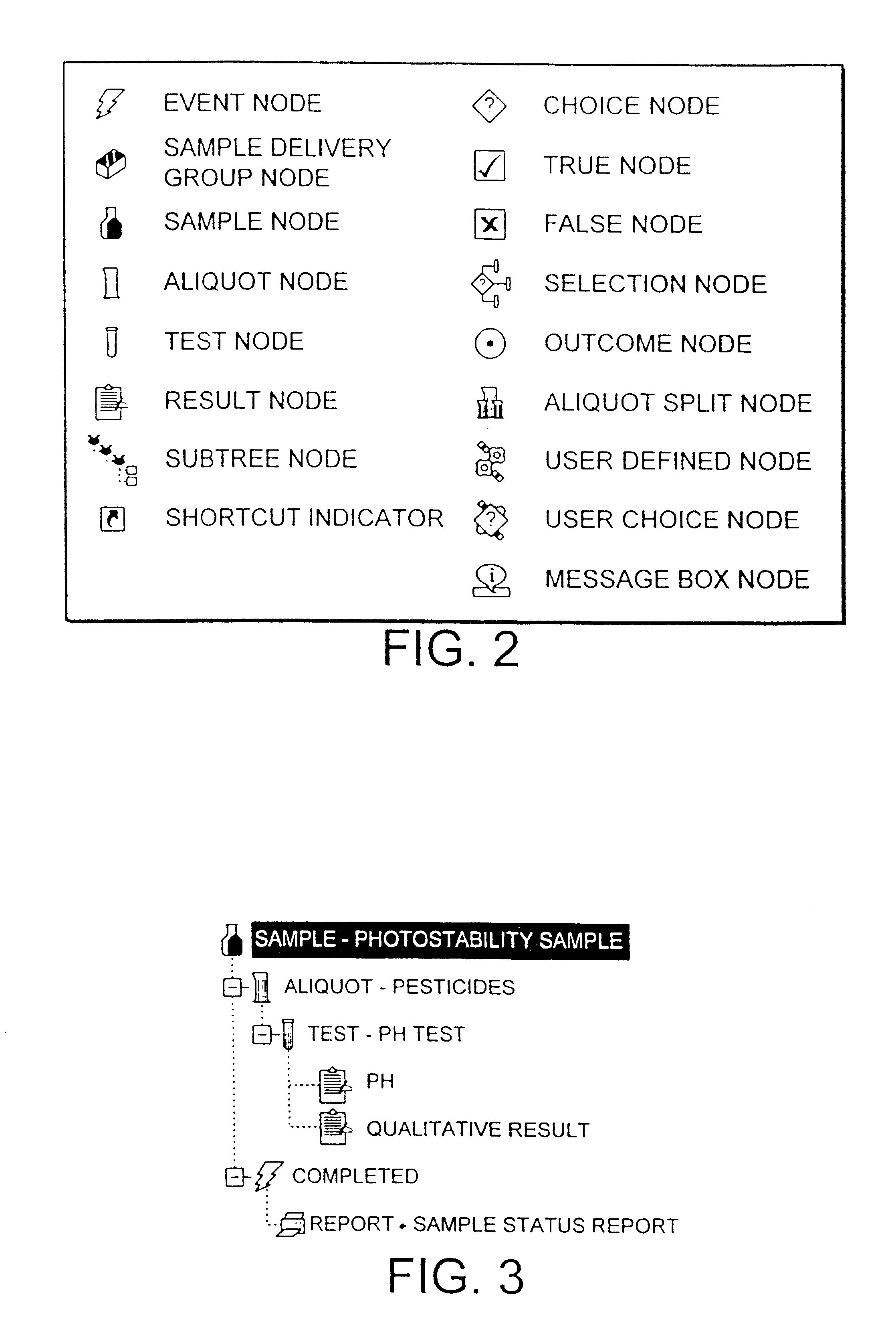Apparatus and method for monitoring and controlling laboratory information and/or instruments
- Summary
- Abstract
- Description
- Claims
- Application Information
AI Technical Summary
Problems solved by technology
Method used
Image
Examples
Embodiment Construction
The operation of the invention relies on the concept of the workflow. A workflow in this context is a model of the laboratory process which defines the events be carried out on a sample or samples. The workflow may include the steps of defining a sample and / or sample group, splitting off and defining aliquots of samples, specifying decisions to be taken, tests to be applied and reports to be printed. The user can build a macroscopic workflow using graphical tools which correspond to workflow nodes. In this way, often complex laboratory processes can be modelled using a structured task list made up of a series of workflow nodes selected by the user. The workflow can be structured to incorporate specific event nodes which allow status changes or report processing, for example, to be triggered as a response to the outcome of a particular test. In summary, a workflow defines the business rules for events to be carried out on a sample. As the structure of a workflow is hierarchical, it i...
PUM
 Login to View More
Login to View More Abstract
Description
Claims
Application Information
 Login to View More
Login to View More - R&D
- Intellectual Property
- Life Sciences
- Materials
- Tech Scout
- Unparalleled Data Quality
- Higher Quality Content
- 60% Fewer Hallucinations
Browse by: Latest US Patents, China's latest patents, Technical Efficacy Thesaurus, Application Domain, Technology Topic, Popular Technical Reports.
© 2025 PatSnap. All rights reserved.Legal|Privacy policy|Modern Slavery Act Transparency Statement|Sitemap|About US| Contact US: help@patsnap.com



